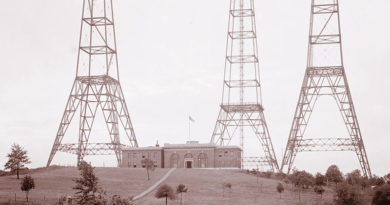Remembering TV Technology
By The Phantom
There was an event of significance to our beloved industry that occurred last summer, the 50th anniversary of the lunar landing of Apollo 11. Heck, we weren’t even haunting the cable TV industry back then, but unknown to the industry or ole Phanty, the time for that collision would come soon enough. We didn’t get a chance to see the landing live on TV because the closest thing we owned to a TV was an old black and white set whose picture tube was so decrepit that it had to warm for a couple of hours before you could make out a dim picture if the room was dark enough.
Anyway, TV Technology ran a series of articles on the TV pictures transmitted from the moon. Check out the article at https://www.tvtechnology.com/news/50-years-later-tvs-longest-ever-remote-remembered. It’ll launch you to other fascinating articles. Apollo 11’s two cameras were specially designed for the flight. The cameras were made by Westinghouse, that had been doing military video projects and had requisite technologies not possessed by RCA and GE, the big kahunas in the TV transmission business.
Cable TV was in its infancy back then. We first encountered it in a certain space-age city in the mid ’60s, when we had access to a magnificent five channel system. Well, it was five channels on a good day when everything was working just right. Otherwise it was a three channel system because frequencies as high as those used by channels 5 and 6 couldn’t always make it down the coax. But it was rumored that the modern cable system on the other side of town, owned by a different guy, had 12 channels, at least on some days.
Cable TV was not considered a serious telecommunications business back then — it was just CATV, community antenna television. Real people didn’t mess with the toy called cable TV, just a few folks who didn’t have the good sense to get with a real comms outfit like the all-powerful telephone company. No one much understood what CATV was, but the phone and power companies knew they didn’t want those funny cables attached to their poles. They even laughed at the RF connector we used, the appropriately-named F connector (and before that the C connector). It was crimped onto the copper-shielded RG-59 coax using a pair of pliers, giving it the derisive name “smash-crimp.” Or maybe some of the earliest ones were soldered on — what a nightmare!
The only business CATV had was retransmission of distant TV signals to audiences who couldn’t receive TV — some early systems were started by radio repairmen who wanted to sell TVs, but no point in selling them if no one could get a signal. We remember reading of a couple of enterprising guys who set up a mini TV station and somehow fed a signal into the local CATV system. They had one camera and either pointed it at themselves or at a screen showing movies from a 16 mm projector. But they even managed to sell an ad to a local car dealer.
But we (or our ancestors in the business) persisted, learning as we went along. We made a lot of mistakes and ate a lot of crow. At first there were few if any regulations telling us how to operate our business, or telling the real companies that they had to lease space on their poles. The broadcasters, if they knew of the CATV guys, were probably happy to have them, since they expanded their viewership, though not by much.
So fast-forward half a century to where we are now: one CATV, uh, cable telecommunications company owns one of the big television networks from back then. We are an integral part of the telecommunications infrastructure and the largest provider of home data service in North America and some other regions. That data business didn’t even exist when Apollo landed on the moon. The business looks a whole lot different now than it did then. Wonder what things will look like in another half century.
 The Phantom
The Phantom
the.phantom@youwontfindmeanywhere.com
You never know when The Phantom is standing right beside you. Sometimes he is in a meeting with you or walking the floor at your favorite cable show. Sometimes he’s hanging with the suits and other times with the front liners. But be assured, The Phantom sees all, The Phantom knows all and, most importantly, The Phantom tells all.
Image: Shutterstock




